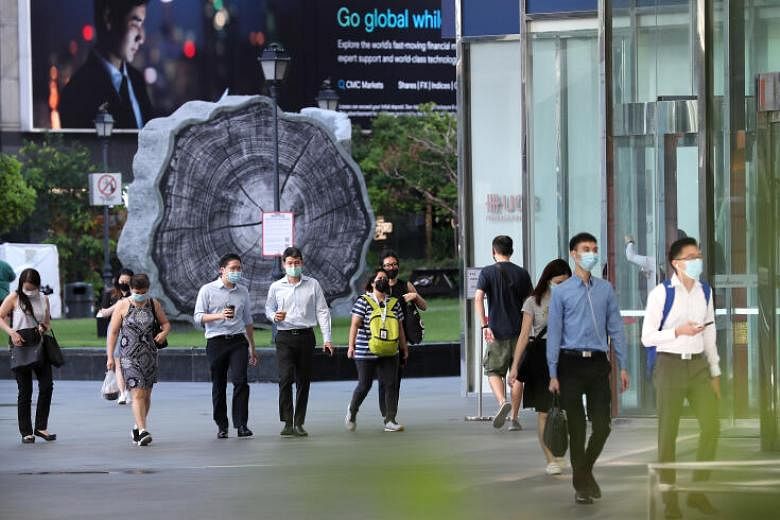In an interview on Friday (Aug 28), Trade and Industry Minister Chan Chun Sing debunked three misconceptions about the Singapore-India Comprehensive Economic Cooperation Agreement (Ceca).
The free trade pact has come under attack from some quarters on social media in recent months as well as during the general election.
1. Myth: Ceca grants Indian nationals unconditional access to Singapore and immigration privileges
It is not true that Ceca gives Indian nationals the right to take up citizenship or permanent residency, said Mr Chan. In Chapter 9 of the agreement on movement of natural persons, Article 9.1.2 states: "This Chapter shall not apply to measures pertaining to citizenship, permanent residence, or employment on a permanent basis."
The proportion of ethnic Indian citizens in the Singapore population has remained stable, he said.
The agreement does not oblige Singapore to automatically grant employment passes (EPs) to Indian nationals. Like all other foreigners, they must meet the prevailing EP criteria, like minimum salary thresholds.
A key bone of contention is intra-corporate transferees (ICTs), which refer to transfers of a company's employees from one country to another. In these instances, companies that bring them in do not have to advertise the position to locals as part of the Fair Consideration Framework.
But they must still meet the EP criteria, as well as have industry experience and worked in the parent company for a minimum duration, said Mr Chan.
Under Ceca, such transferees must have worked at least six months in the parent company, among other requirements. They can stay a total term of eight years, at most.
Mr Chan said Singapore's Ceca commitments are neither unique nor overly broad, as most of the 164 members of the World Trade Organisation have also made commitments on entry of ICTs under the General Agreement on Trade in Services. Local companies tap Singaporean ICTs too, when they expand overseas, he said.
"It applies equally to Indian companies coming here and to Singapore companies going overseas - under Ceca or under any other (free trade agreements). This is to help them kick-start the overseas operations."
2. Myth: Ceca does not benefit Singapore economically
Since Ceca was signed in 2005, Singapore's trade with India has grown by $7.6 billion and investments, by 34 times.
By 2018, more than 650 companies in Singapore had invested in India.
Mr Chan said the trade pact not only protects Singapore companies that invest in India, but also attracts foreign investors who invest in India, and employ Singaporeans to manage their investments.
In Singapore, these companies employ nearly 100,000 Singaporeans and permanent residents.
What this means is that the Indian market, as with other large markets, helps these companies to diversify and make their operations more robust.
"Besides having better access to a huge market and all the savings that come with tariff reductions, it also allows us to grow our capabilities," said Mr Chan.
Companies such as PSA and engineering firm Meinhardt are also now key players in port management and engineering in India, he added.
3. Myth: Ceca has caused overconcentration of Indian nationals in some companies here
Mr Chan said the presence of certain nationalities is shaped by the choice of sectors Singapore wants to grow.
Currently, these include new and fast-growing sectors, such as info-communications and technology, professional services and financial services.
It is not that Singaporeans are not good enough for the jobs in these sectors, but that Singapore does not have enough people for these jobs, he said.
"We do not have enough numbers to get to the critical mass."
Mr Chan said the profile of Singapore's foreign workforce will evolve over time as its industry profile changes.
"In the 1960s and 1970s, when we were building up our petrochemical industries, the top management positions (in companies such as Shell) were not mainly Singaporeans either. But after a few decades, why is it that the top spots are held by Singaporeans?
"Because we allowed the previous generation the opportunity to create jobs not only for themselves, but also for this generation."
The same thing happened in the 1980s and 1990s, when Singapore's focus was on electronics and semiconductors, he said.
"Today, we have a whole generation of precision engineering firms, engineers to support the semiconductor industry, and have many spin-offs."


